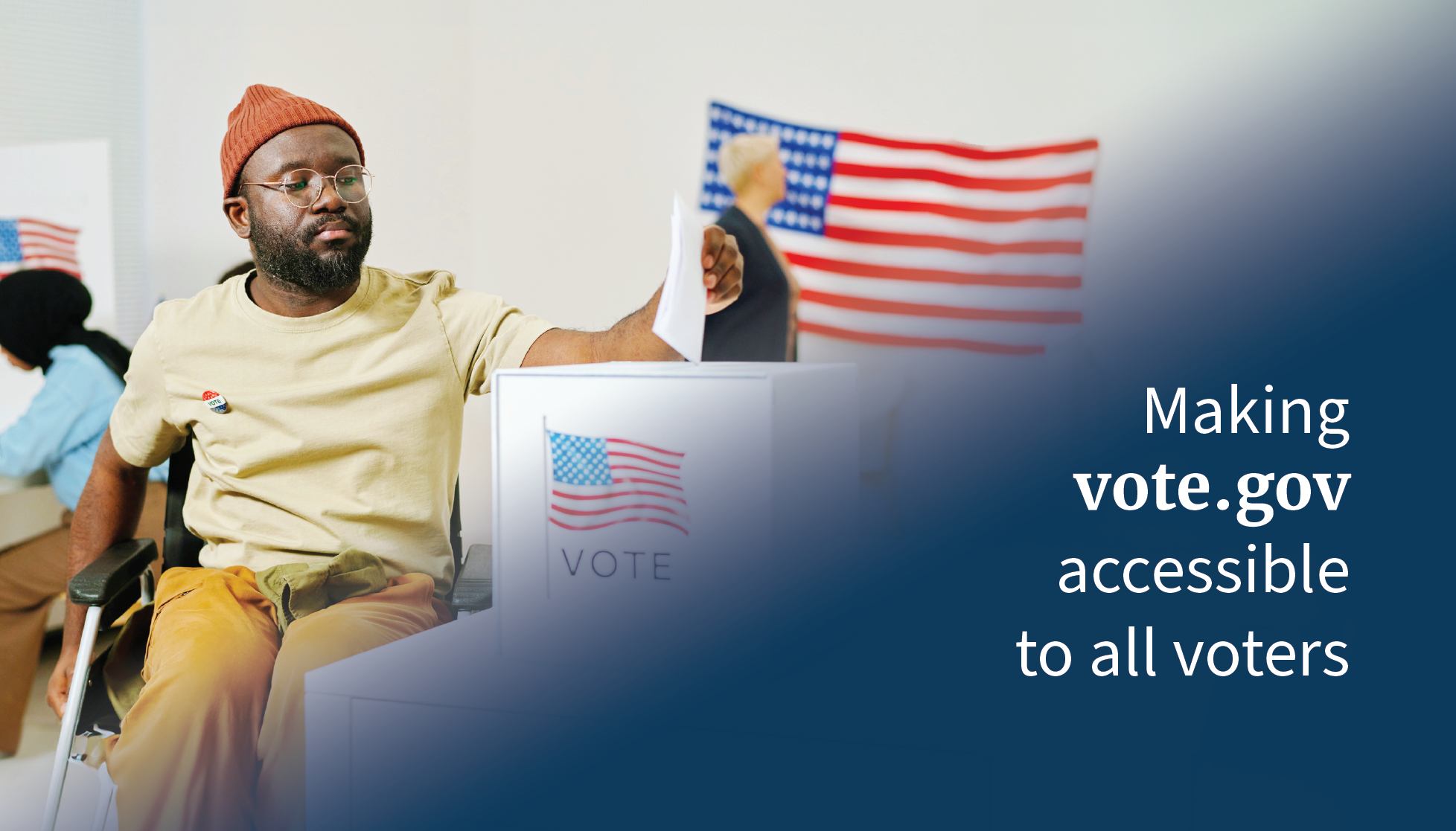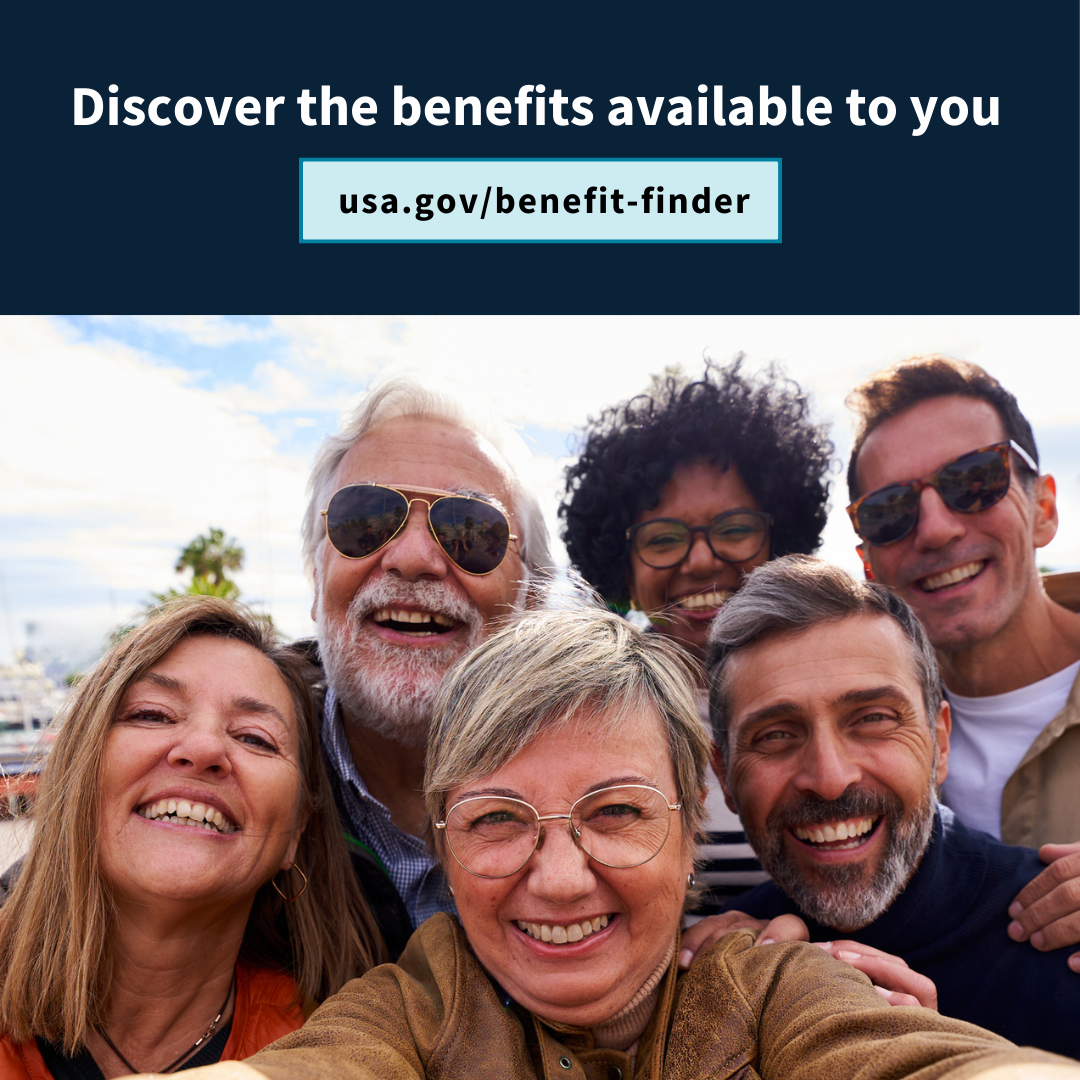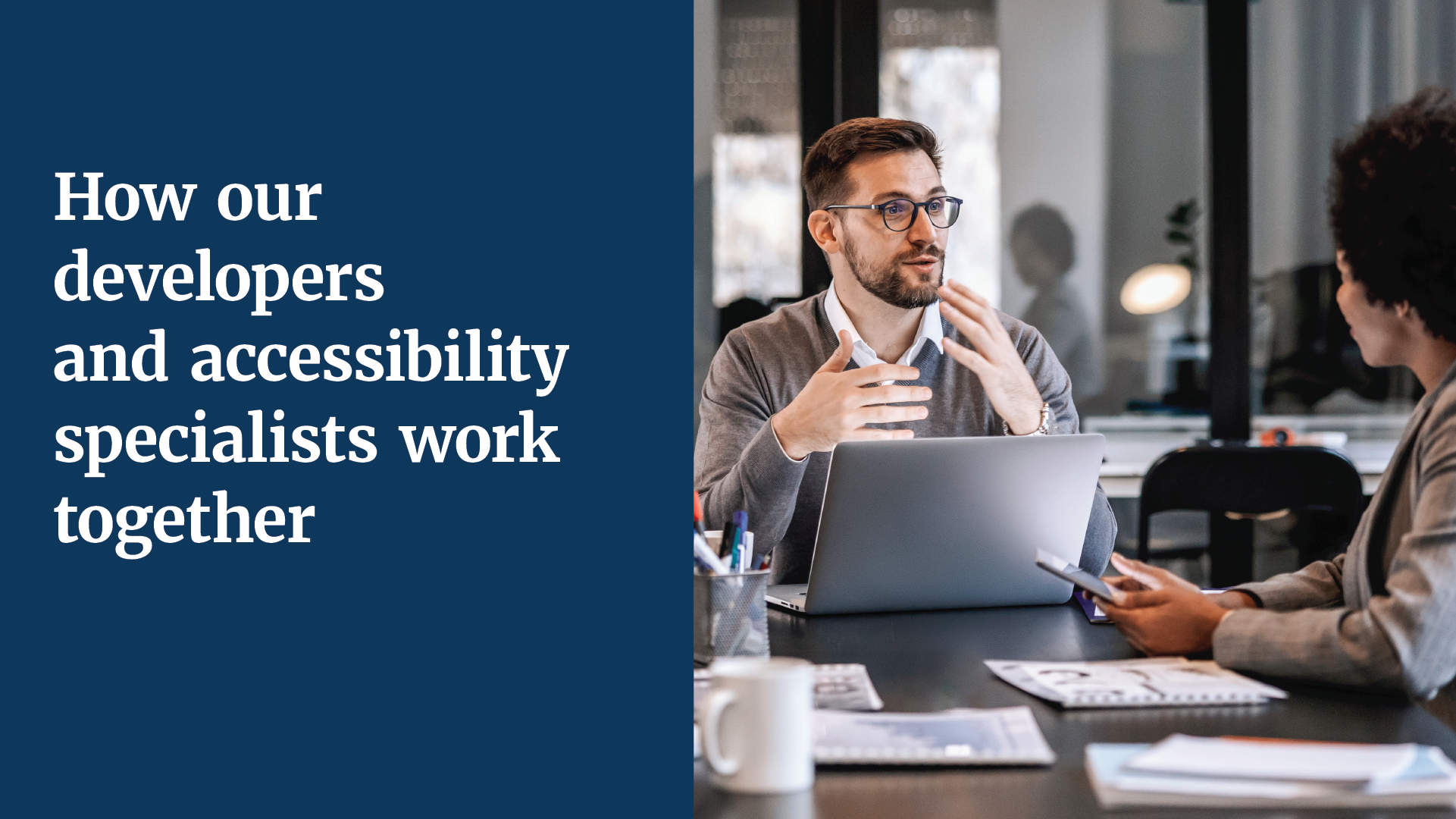Federal laws protect voting rights for people with disabilities, but many people with disabilities experience barriers to voting, leading to lower voting rates.
After the November 2022 midterm elections, the Election Assistance Commission (EAC) estimated that if voters with disabilities had voted at the same rates as voters without disabilities, there would be around 2 million more votes cast. The EAC also found that people with disabilities voted at a 3.6 percent lower rate than people without disabilities, though that number narrowed to 1.5 percent after being adjusted with updated Census data.
Accessibility matters both in person and online. As an official government source of voting information, vote.gov helps voters with disabilities know that their voting rights are protected by law. And it makes them aware of accommodations available to help them register and vote.
In addition to providing information about how to vote, we’re also actively making improvements to vote.gov’s website design to make sure it’s as accessible as possible. This includes screen reader compatibility, high-contrast designs, and plain language. Here’s how we’ve accomplished this so far.
Accessibility testing
Our team conducts accessibility testing on all vote.gov web pages before we roll out new content. This helps us make sure each page is compatible with zoom magnification, keyboards, and screen readers. We also added an HTML sitemap to allow for multiple methods of navigation to various web pages on vote.gov.
To improve the accessibility of the National Mail Voter Registration Form, we partnered with the EAC to build a digital form filler tool. Voters will be able to select their state and get the specific instructions they need based on their state. This streamlines over 20 pages of instructions from the original PDF registration form. The digital form filler tool will be mobile-friendly and provide a better screen reader experience. We plan to launch the tool on vote.gov in the coming months.
Gathering research and feedback
We’ve worked with disability advocacy groups representing several types of conditions (limited vision, cognitive disabilities, and more) and integrated their feedback. And we partnered with the World Services for the Blind to recruit 10 research participants for 30-45 minute phone and video sessions focused on the readability and usefulness of vote.gov content.
If you are disabled and/or use assistive technology and would like to share feedback about your experience using the vote.gov website, you can sign up using this form.
An ongoing commitment to accessibility
It’s important to us that people are aware of vote.gov’s commitment to accessibility and have a way to share their feedback. To that end, we:
- Developed an accessibility statement that is unique to vote.gov and outlines our commitment to making vote.gov accessible to people of all abilities
- Offer a 508 email contact for the vote.gov team: section508-vote@gsa.gov
- Provide the website feedback form in English and Spanish
What’s coming up next
While we’re proud of our progress so far, the work is far from complete. Here’s what else is in the pipeline:
- We’re conducting more usability testing with people who have situational limitations (limited access to the internet, rural citizens, etc.) and physical and cognitive disabilities.
- We’re working on a display toggle to make sure people with low vision and other conditions can customize their view of vote.gov by enlarging the text and/or changing the contrast. This feature came directly from user feedback from the Center for Civic Design.
- Research tells us voting terms can be confusing. We’re workshopping ways to add definitions on our pages to make it easier for people to understand complicated voting terms and phrases (such as “ballot measures” and “caucus”).
- We’re testing our back-end content management system (CMS) for accessibility so vote.gov designers, developers, and other team members with disabilities can help contribute to the maintenance of vote.gov.
Our goal is for all voters to have equal access to our website and find information about their voting options and rights. We are always open to feedback. Email us at section508-vote@gsa.gov if you have ideas we could incorporate to make vote.gov an even more accessible and inclusive experience.




